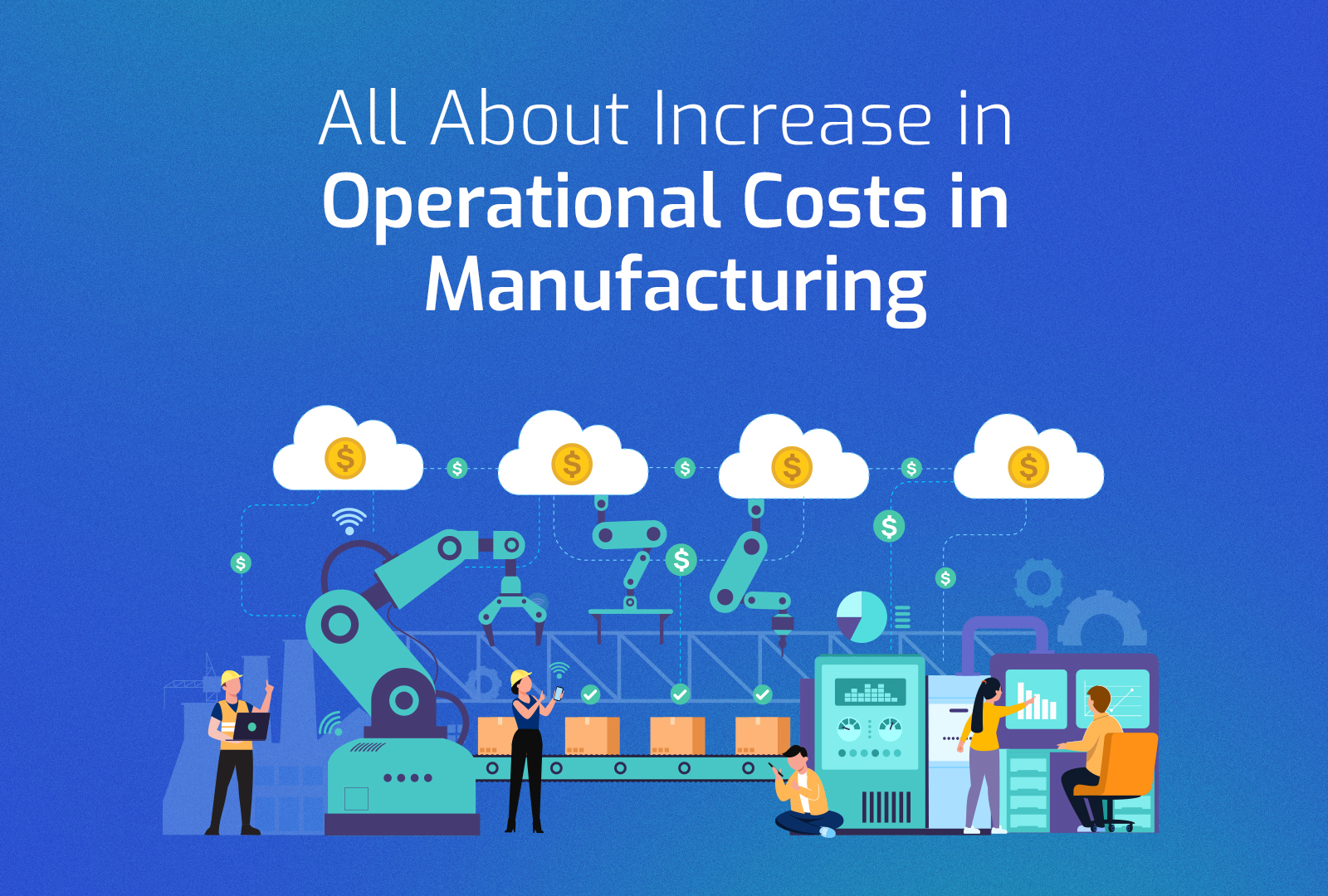- 4th June, 2023

Introduction:
We all know the old saying: it takes money to make money. But nowadays it seems like it takes more money than ever. When you’re in the business of making things, the cost of getting your goods from concept to customer matters a lot. Lately, though, the money it takes to keep a manufacturing business running smoothly — the operational costs — seems to be going through the roof. These costs directly impact the profitability and competitive positioning of manufacturing entities. Given the recent upswing in these costs, it’s crucial to understand the underlying factors contributing to this escalation.
This blog post will explain these policies in a straightforward way.
Factors Contributing to Rising Operational Costs
-
Raw Material Costs:
Changes in the price of raw materials can greatly affect operational costs. These changes can come from different places. For instance, the recent global pandemic disrupted supply chains, leading to higher prices. Also, conflicts such as the Russian-Ukraine war can impact the availability and cost of certain materials. When these costs increase, it directly raises the cost of manufacturing products.
-
Energy Expenses
Operational costs in manufacturing are significantly influenced by energy prices and efficiency. Market fluctuations directly impact costs, while inefficiencies such as high T&D losses and low power factor result in wasted energy, further increasing expenditures.
-
Labor Costs:
Labor costs are influenced by several elements. Regulatory changes, such as a rise in minimum wages or enhanced labor rights, can directly increase these costs. Additionally, the need to attract and retain skilled labor in a competitive market often necessitates above-average remuneration packages. Training costs for new hires or upskilling existing staff also add to the overall labor expenditure.
-
Regulatory Compliance:
Manufacturers must adhere to an array of regulations concerning safety, environmental impact, and quality control. As these regulations become more stringent, the cost of ensuring compliance often increases, adding to operational expenses.
-
Technology and Maintenance:
Investing in the latest technology can be a double-edged sword. While it promises increased efficiency and productivity, the initial investment, training, and maintenance costs can be high. Furthermore, the rapid pace of technological advancements necessitates regular upgrades to stay competitive, leading to continuous expenditure.
These factors together contribute to the rising operational costs in manufacturing. However, by understanding these drivers, manufacturers can strategize and plan for effective cost management, thereby ensuring sustainable and competitive operations.
Dealing with Higher Costs
Even though it might feel like operating costs just keep going up, there are plenty of things businesses can do to keep them under control:
-
Implement Industrial Internet of Things (IIoT):
The Industrial Internet of Things (IIoT) is all about connecting things together in your business. This means you can get a lot of useful information in real-time that can help you make decisions, run things more efficiently, and cut down on waste.
-
Use a Smart Energy Management System:
This advanced system can help businesses monitor and control their energy use, identify wastage, and optimize energy consumption. A reduction in energy usage directly translates to a decrease in energy expenses.
-
Adopt Predictive Maintenance:
Unlike traditional maintenance schedules, predictive maintenance utilizes data from equipment sensors to predict potential faults and failures before they occur. This proactive approach minimizes downtime and prevents costly repairs or replacements, leading to significant savings.
-
Streamline Supply Chains:
Optimizing supply chains can reduce raw material costs. This could involve sourcing from cost-effective suppliers, negotiating bulk purchase discounts, or utilizing local sources to decrease transportation costs.
-
Invest in Employee Training:
A well-trained staff can enhance efficiency and productivity, leading to potential cost reductions. This includes training in efficient machinery operation and cross-functional skills.
-
Automate Processes:
Automation can reduce labor costs and increase efficiency. Automating repetitive tasks or using software for inventory management can yield considerable cost savings.
-
Follow Lean Manufacturing Principles:
These principles, focused on waste reduction and efficiency improvement, can significantly lower operational costs.
Conclusion
- In a nutshell, while it’s true that operational costs are on the rise, businesses in the manufacturing industry are not without tools to tackle these challenges. By understanding the factors driving these increases and implementing strategies to address them, manufacturers can remain competitive. Ready to learn more? Book a demo with us today and let’s explore how we can help you stay competitive in this ever-changing landscape.